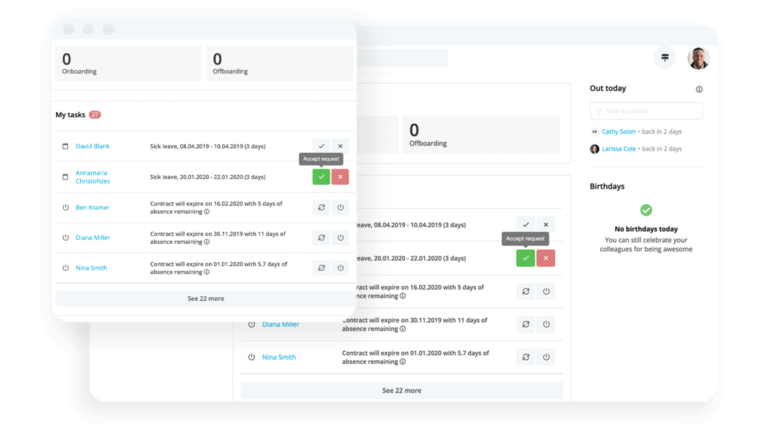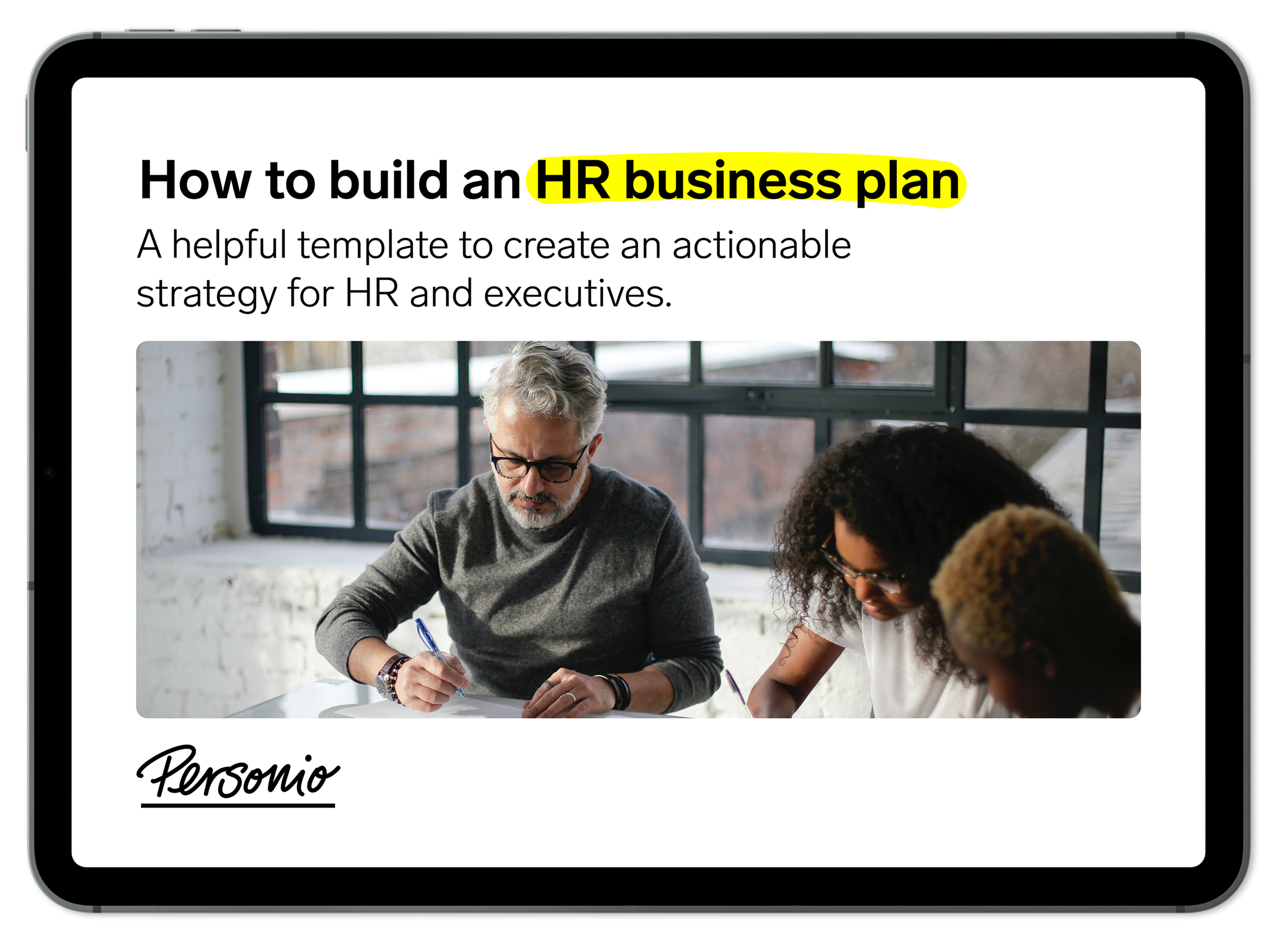Human Resource Flow: 5 Stages and 7 Expert Tips
How are your human resources processes 'flowing'? The idea of a human resource flow might sound a bit foreign, but it's fast becoming a better way to understand the employee lifecycle and how an organisation's HR team manages it.
In this guide, we’ll walk you through the basics of the human resource flow model and how to use it to improve HR management in your organisation.
Key Facts:
The human resource flow is a model showing how employees ‘flow’ through an organisation, from recruitment and onboarding to promotion and exit.
There are five key elements of human resource flow: Recruitment and selection, onboarding, career development and promotion, redeployment and exit (redundancy, retirement or transition to a different career path).
What is the human resource flow?
A human resource flow describes the way members of a company’s workforce ‘flow’ through the organisation. Also known as their employee life cycle, the flow model is used to explain the journey an employee goes through from the first contact with the company (recruitment or hiring) to their eventual departure.
The human resource flow model involves three distinct steps:
Inflow – In this stage, new employees ‘flow’ into the organisation through recruitment, selection and hiring.
Throughflow – This stage includes everything that happens between the employee starting with the organisation and when they leave, from onboarding to promotion and lateral career moves.
Outflow – This is the stage when an employee leaves the organisation due to resignation, retirement, redundancy or dismissal.
What are the 5 stages of the human resource flow?
The human resource flow for an organisation involves five elements:
Recruitment and selection
Onboarding
Career development and promotion
Redeployment
Redundancy, retirement or transition to a different career path.
Understanding the 5 phases of the human resource flow
There are five key phases of the human resource flow that HR can use to develop the best employee experience possible while ensuring the organisation maximises the benefit of each member of its workforce.
The five phases include:
This is one of the most important elements of the human resource flow. Here, HR managers aim to implement efficient recruitment methods that attract the best candidates, including accurate and engaging job descriptions and a seamless application experience.
It’s important that these elements and processes do not weigh too heavily on candidates, while still enabling hiring managers to find and select the best talent.
2. Onboarding
HR managers must utilise an effective onboarding process to ensure new recruits comprehend the ins and outs of the organisation, including what will be expected of them in their role.
It is vital for HR to provide employees with sufficient guidance from the beginning of their tenure to ensure newcomers acclimate properly.
3. Career development and promotion
This element of the human resource flow model involves mapping out each employee’s training needs, development path and promotion process.
This element motivates employees to work hard, gain new skills and progress in their career through promotion or lateral career moves.
This also fosters loyalty among staff, as it shows that their personal development is important to the organisation.
4. Redeployment
While the other four elements are constants, redeployment – shifting an employee to a new location or job role within the organisation – is not always a part of the human resource flow model.
Redeployment can serve as a solution to redundancy, with HR offering feasible alternatives, such as applying for relevant job vacancies.
The crucial piece of redeployment is that HR managers must ensure the suitable alternatives are made available to employees before they become redundant.
5. Redundancy, retirement or transition
This final element of the human resource flow explains the different ways an employee exits the organisation.
This can be due to redundancy if there is no longer a need for their role within the organisation; retirement if they decide it's time for them to leave the workforce altogether; or a career transition where they leave the company voluntarily.
Whichever route applies must be managed carefully, as it will affect both existing staff morale and future recruitment efforts if handled poorly.
15,000 organisations trust Personio for this reason

Just like LUSH and Premier Inn, trust Personio's all-in-one HRIS to upgrade your people operations for now and into the future. Click below to learn more about us.
Book Your DemoHow to manage the human resource flow
Managing human resource flow plays a key role in meeting HR objectives, as good flow ensures the organisation will have the right amount of workers, in the right roles, at the right time. The first step to managing this flow is to build its foundations.
Human resource flow and organisational design
Organisational design helps set the tone for how workers flow through their employee life cycle. Some areas to consider when designing and managing the human resource flow include:
How do jobs in the organisation fit together? For example, levels of hierarchy, number of workers reporting to each manager, level of autonomy for employees decision-making.
What organisational design best meets the needs of the business? There are no right answers. Different organisations will have unique human resource needs, and design may even vary between departments within the same organisation.
How do we want to balance control versus creativity? An organisation focused on creativity and idea sharing might avoid too much hierarchy, while those wanting more control over employee action and performance might use a more hierarchical structure.
How autonomous should our employees be? An organisation wanting employees to be empowered to make decisions may want to be decentralised, while one with senior management aiming for consistent approaches across the company might prefer to be centralised.
What factors could impact the organisational design and HR flow over time? Organisational needs are likely to evolve over time, requiring adjustments or even full redesign of the human resource flow. For instance, economic pressures could lead to a decrease in headcount or layers of management, or a more skilled or highly trained workforce could enable better delegation and autonomous decision making.
Help your HRBP to unlock executive buy-in

Download our HR Business Plan Template to help your HRBP pull together a plan that earns executive support.
Get the template7 tips to improve your human resource flow
A human resource flow involves optimising the employee life cycle, as the journey employees take through the organisation will not only impact their own experience and professional growth but also the impact they can have on the business.
Here are seven tips To improve human resource management and HR flow:
1. Invest in employee training and development
This is a key aspect of the “throughflow” stage. Providing opportunities for employees to learn new skills and develop their careers – such as through on-the-job training, coaching, mentoring, and access to online learning resources – can lead to higher levels of job satisfaction, employee retention, and improved performance.
2. Streamline HR processes
Each of the processes included in the HR flow, from hiring to onboarding to performance evaluations, can be time-consuming and frustrating for both managers and employees. Streamlining these processes through the use of technology, such as HR software or automated workflows, can reduce administrative burdens and increase efficiency.
3. Implement an effective performance management system
This can help managers and employees establish clear performance expectations, provide feedback, identify areas for improvement, and recognise achievements.
4. Foster a positive workplace culture
A positive workplace culture leads to higher employee morale, engagement, and productivity. Whether through promoting a sense of community, recognising employee contributions, or providing opportunities for employees to socialise and connect, placing focus on workplace culture can maximise the length of time employees stay within the organisational ‘flow’, rather than leaving voluntarily before the company is ready to part with them.
5. Prioritise employee well-being
Employee wellbeing is crucial for maintaining a healthy and productive workforce. Flexible work arrangements, wellness programs, competitive benefits, and a supportive work environment that prioritises mental health and work-life balance will all help to optimise human resource flow.
6. Develop clear job descriptions and roles
Providing employees with clear job descriptions and roles is part of both HR inflow and throughflow, and can help workers understand their responsibilities, reduce confusion, and improve overall performance. It also enables managers to set clear expectations and evaluate employee performance effectively.
7. Emphasise leadership development
Every organisation understands the importance of developing strong leaders. This is part of throughflow and can include leadership training and mentoring programs to help managers develop their skills and improve their ability to lead and motivate their teams.
Main challenges of the human resource flow
There are a number of challenges that most organisations will face when managing their human resource flow, one of the most notable of which is an ageing workforce. This manifests in different ways depending on the country and is impacted by a number of factors.
For instance, consider the age at which people retire from the workforce around the world. Some countries have a younger retirement age – such as China, where men retire at 60 and women retire between 50 and 55 – while others have a higher retirement age. France, for instance, recently increased its state pension age from 62 to 64, causing mass protests.
Other factors impacting the ageing workforce challenge include decreasing birth rates, rising life expectancy, the increase in women joining the workforce, and more.
Organisations must be aware of how their workforce will age and be prepared for any challenges this may bring, whether through training for younger workers to replace retiring managers, understanding labour laws and age discrimination issues, or continual upskilling for older workers to learn new technologies.
That being said, managing technological change is a challenge across age groups and organisations. Advancements in technology – such as the massive changes developing with OpenAI’s platform ChatGPT – are transforming the workplace, and organisations need to adapt to these changes in order to remain competitive. However, managing technological change can be a challenge, as it requires a significant investment of time and resources, as well as the ability to stay ahead of rapidly evolving trends and developments.
Additionally, retaining skilled employees is difficult in today's competitive job market where they may have many job options. If an employee is not happy in their current job, they may be tempted to look elsewhere. This can result in a high turnover rate, which can be costly for the organisation.
How does your HR flow?

Consider this: every employee in your organisation goes on a journey, from their first day to their last. How is your HR function helping them enjoy the experience so they can do their best work, help your organisation succeed and advocate new talents to join you on your mission?
If you don’t have a plan in place, consider Personio. We offer an all-in-one HR software solution that can help upgrade your people operations for now and the future. Together, we can help address your biggest HR pains, save time on crucial tasks and make time for what matters: your people.
Why wait? Speak to one of our HR experts today about your top challenges and how Personio can solve for them. We would love to hear from you.
